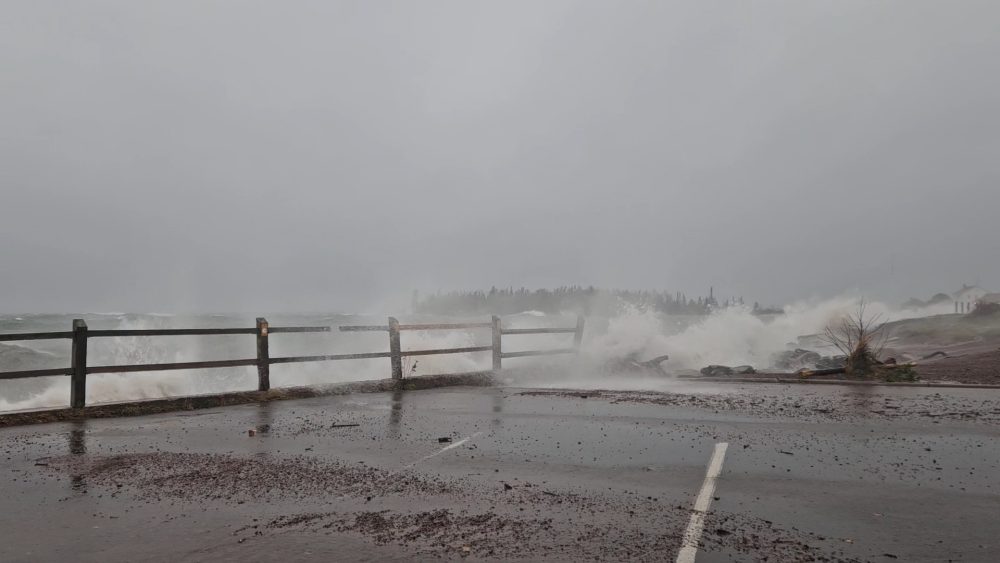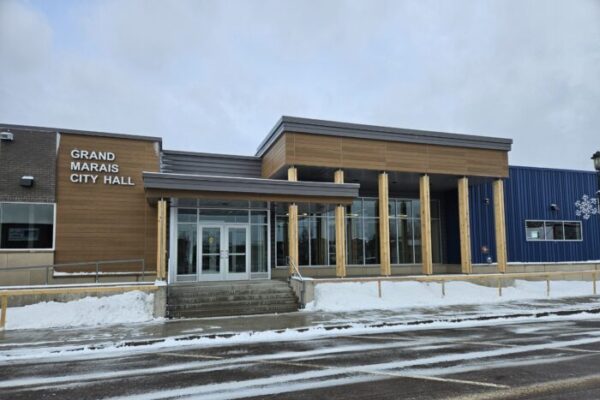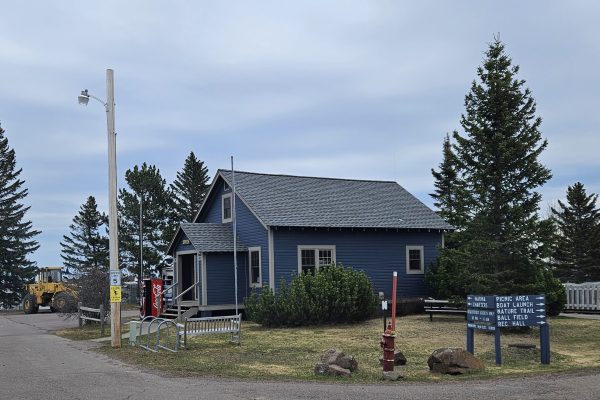Coastal erosion study planned for Grand Marais East Bay
For fans of wave watching, the East Bay of Grand Marais is a prime location for seeing large waves whenever the wind picks up. For property owners along the bay, that has meant concern about erosion in the area.
Cook County Soil and Water Conservation District Conservation Technician Stephen Janasie told WTIP that while coastal erosion is a concern across the Great Lakes, there is a lot of variation on what it can look like, and that the East Bay is a unique situation.
Wave strength is determined by several factors, including wind strength and duration. Additionally, “fetch,” which Janasie defined as the distance between landmasses that would cause a wave to break, contributes to how large a wave can get. Higher levels of fetch mean more time for a wave to build strength.
“If you draw draw a line from that Cove along the shoreline, moving in basically like an east, north, northeasterly direction, you don’t really hit any kind of landforms until you get all the way up to the shoreline on the very top of the lake in Canada,” said Janasie, “Which means we’ve got a tremendous amount of fetch.”
While the North Shore’s cobble beaches are generally pretty erosion resistant, Janaise said that the amount of development located so close to the shore presents a challenge. He said, “When all of these factors come together and these massive waves start rolling in, ultimately, they don’t have much of anywhere to go but directly against those structures that exist along the East Bay of Grand Marais.”
Property owners in the area have seen damage from waves, flooding, and stones and aggregate being thrown from the shoreline. Previous projects to try to minimize erosion to properties have included placing boulders in the bay as well as shoring up the break wall near businesses. Janasie said that the efforts so far have not proven to be long-term solutions.
The City of Grand Marais and SWCD have been aware of property owners’ concerns, and have been in contact with the Army Corps of Engineers to help come up with solutions. Before any plans are proposed, the organizations will conduct a study of the area. Janasie said that the study will comprise of several phases in an effort to collect different types of data at different points in the year in order to get a comprehensive view of the bay and the impact of waves on the shoreline.
The estimate for the cost of the study is $543,000. Janasie said that the Army Corps of Engineers will cover half of that cost, and that SWCD is working with the City of Grand Marais to secure funding for the remaining roughly $270,000, in an effort to pass on as little cost to residents as possible. He said “So the goal here is to make that number zero, or as close to zero as possible. So the less money that local taxpayers are shelling out for this project, the happier we are. And so at the Soil and Water Conservation District, we’re just going to do what we’ve always done, which is chase grants. We’re very good at that.”
The details of the study and contract with the Army Corps of Engineers are still being finalized, but Janasie said that the Corps is already compiling data from historical sources. He guesses that residents and visitors in Grand Marais could see study equipment in the East Bay as early as next summer.
WTIP’s Kirsten Wisniewski spoke with Conservation Technician Stephen Janasie from the Cook County Soil and Water Conservation District. Audio of that interview is below.














